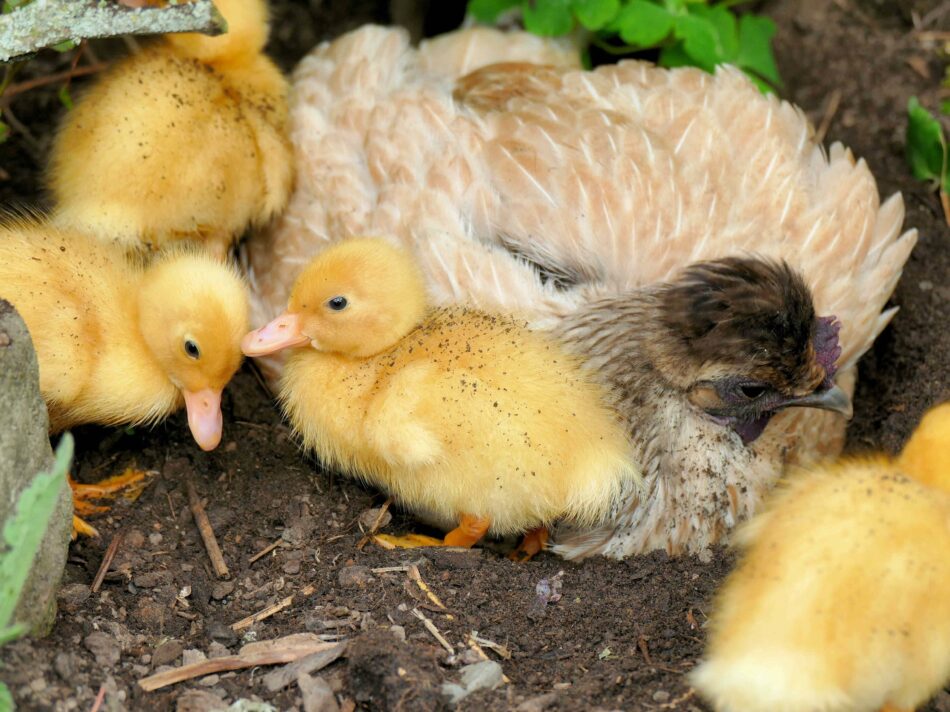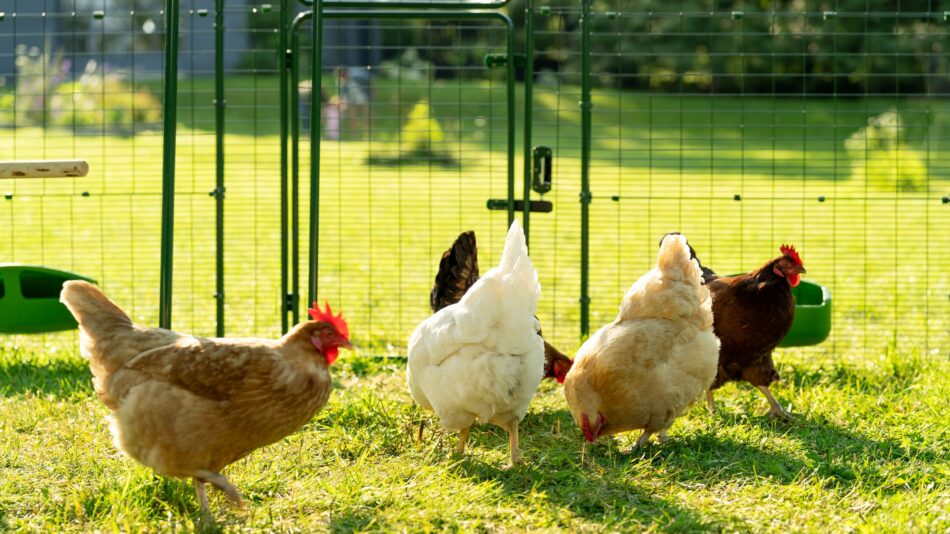Can you keep chickens and ducks together?

Can you keep chickens and ducks together? This may be a question you’ve raised as you’ve ventured further into the world of poultry. Ducks and chickens can cohabitate, but there are some modifications and considerations to take into account. For example, only female ducks (hens) should be kept with your chickens, and some adjustments need to be made to their waterers. Find out everything you need to know about keeping chickens and ducks together before diving into mixed-flock keeping.
Why keep chickens and ducks?
Chickens and ducks have similar dietary and space requirements, so they can easily be kept together. Both species can thrive as a free-ranging flock, or in coops and runs. Ducks also lay eggs, and depending on the breed, can lay as often as one egg per day.
In addition to adding variety to your egg basket, ducks offer an infusion of personality into your chicken flock. Their social behaviors are similar to those of chickens, but tend to be more laid back than hens.
Duck-keeping legislation
There are laws about keeping chickens depending on the city you reside in. You may also be subject to homeowners association (HOA) laws and regulations in regard to chickens. Some common restrictions include:
- Keeping roosters
- Chickens being within so many feet of a dwelling
- The type and size of chicken coop and run
The same guidelines will apply to ducks, unless otherwise stated in the laws that your property is subject to.
3 tips for chicken and duck harmony
Housing and space
Ducks prefer to roost at ground level, while chickens seek out an elevated sleeping spot. For mixed flock keepers, this leaves a couple of different options:
- Create a roosting area for your ducks underneath your hens’ elevated chicken coop.
- Provide a ground-level hen house for your ducks.
The area beneath the Eglu Cube Chicken Coop can be utilized for your ducks by covering the sides with chicken run covers. You’ll also want to provide your ducks with a nesting box at ground level – which your chickens may utilize as well.
An Eglu Go hen house with the roosting bars removed works wonderfully for webbed-footed flock members. Most domesticated breeds of ducks will fit comfortably inside, but be sure to verify the size of full-grown hens of the breeds of ducks you’re considering to compare with the size of the Eglu Go. If you’re unsure, our knowledgeable team can help you decide if your ducks will be comfortable in one of our coops.
Beaks and bills
Chickens have beaks, while ducks have bills. Duck’s mouths are shaped mainly to forage in wetlands. Their flat, wide mouths have tiny hair-like structures along the edges called “lamellae” that filter their findings through water and mud. Because of the shapes of their bills, they need open container waterers – but not so large that they’ll want to climb in for a swim. A run-mounted chicken drinker is a great option for both species.
Because chickens have narrow beaks instead of wide bills, serving their scratch grains and treats in chicken peck toys and hanging dispensers will ensure they get their share of the daily allotment. Ducks can scoop grains and treats up quickly with their shovel-like mouths, potentially before more timid hens can get to them.
Create a swimming section
Ducks need access to water, especially during the warm summer months. Children’s wading pools or shallow water troughs make perfect swimming areas for small flocks of ducks. This area should be a separate area from your chickens’ pecking areas – ducks will happily splash water haphazardly and create muddy areas. A chicken walk in run partition can be used to create their own swimming section within the shared run.
Keeping chickens and ducks: what else to consider
Chickens and ducks can eat the same diet – a quality layer feed of 16% protein is fine for a mixed flock. Feeders should have openings large enough for your ducks’ bills to fit into, or be open-topped containers. The same fresh foods, treats, and scratch that you feed your chickens can be given to ducks as well.
Raising ducklings and chicks together can be done without many adjustments, but be sure that your brooder is large enough to accommodate at least two different temperature zones. Ducks mature faster than chickens, so ducklings won’t need as much heat for as long as chicks will. They’ll also try to play in waterers, so the bedding of the brooder will need to be changed frequently.
And finally, it’s crucial that only duck hens be kept with chickens. Male ducks (drakes) can be very aggressive with hens, and attempt to mount them as a rooster would. But, not only does this not result in offspring, the size of the drakes will cause injury to chicken hens. Duck hens are much more even-tempered, and can cohabitate with chicken hens without issue.
Chickens and other pet birds
In addition to ducks, there are some other animals that can be kept with chickens. From the bird family, other fowl you may consider adding to your chicken flock include:
- Quail
- Pheasants
- Pigeons
- Geese
- Turkeys
Again, only female varieties of each species should be kept together to avoid potential injury. There are some dietary and housing considerations to be made for each species you keep, but it’s definitely possible to keep more than one type of bird together.
Omlet and your flock
At Omlet, we aren’t just a group of engineers and inventors – we’re animal behaviorists. We consider first the pets we design our setups for, then how their owners can maintain their health and happiness and deepen their mutual bonds. When considering adding ducks in with your chickens, our Eglu Go hen house and walk in chicken run are an excellent pairing to maintain harmony with your hens of both species.
This entry was posted in Chickens

